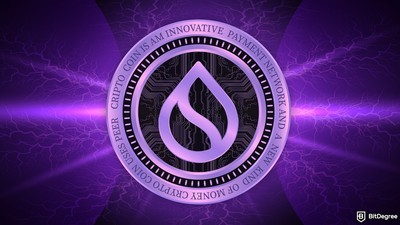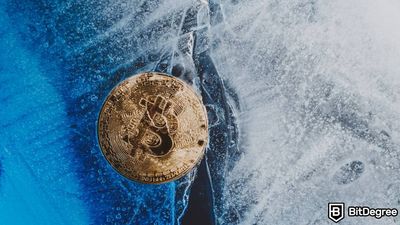Key Takeaways
- The Dollar Milkshake Theory, propagated by financial strategist Brent Johnson, posits that the US dollar will strengthen due to global economic instability, drawing liquidity into the US market;
- This theory suggests that as global economies face challenges, investors seek refuge in the stability of the US dollar, leading to its appreciation and potential market implications;
- Some analysts speculate on the Dollar Milkshake Theory's potential impact on cryptocurrency markets, proposing that amidst dollar strength, cryptocurrencies may face increased scrutiny but could emerge as alternative stores of value in uncertain economic climates.
Free Airdrop Season 7 is LIVE! Answer fun questions or do simple tasks to earn rewards from the $30K BitDegree prize pool. Participate Now ! 🔥
One theory that has gained significant attention in recent years is the Dollar Milkshake Theory. Many interesting concepts emerge to explain the intricate interplay between currencies, economies, and markets, and the Dollar Milkshake Theory is no different.
It revolves around a unique perspective on the global financial landscape and the role of the United States Dollar (USD). As it is a concept akin to currency trading and currency price comparison, I’ll also delve into how it can be useful when talking about crypto. Along with the cryptocurrencies themselves, exchanges like Binance, Kraken, and Coinbase have emerged as significant players in the financial landscape.

Did you know?
Subscribe - We publish new crypto explainer videos every week!
What is a DAO in Crypto? (Animated Explanation)


Table of Contents
- 1. What is the Dollar Milkshake Theory?
- 1.1. Implications for the Financial Market
- 2. The Impact of the Dollar Milkshake Theory on Cryptocurrencies
- 2.1. Crypto: Another Milkshake?
- 3. Understanding USD’s Dominance
- 3.1. The Role of Central Banks
- 4. Currency Wars and Trade Dynamics
- 5. Criticisms of the Dollar Milkshake Theory Explained
- 6. Future Implications of the Dollar Milkshake Theory
- 7. Conclusions
What is the Dollar Milkshake Theory?
The Dollar Milkshake Theory, in summary, is an economic concept coined by financial strategist Brent Johnson in 2010. It is a metaphorical theory that attempts to explain the strength and potential future appreciation of the USD relative to other major currencies.
Latest Deal Active Right Now:Head to BitDegree Missions, gather as many Bits as possible & claim your stake of the $30,000 Prize Pool! Don't waste your time & start collecting Bits by completing Missions and referring friends.
If you're looking for the Dollar Milkshake Theory summary, just note that it is based on several key assumptions and factors. Most importantly, it recognizes the United States as the epicenter of the global financial system, with the USD being the world's primary reserve currency. The dollar's role as a reserve currency means that it is held in large quantities by foreign governments, central banks, and international institutions.
According to what is the Dollar Milkshake Theory, various global economic forces, and factors are pushing capital toward the United States, leading to a "sucking" effect on the dollar.
In essence, these forces create a scenario where global liquidity is drawn into the United States, similar to the vortex of a milkshake being sipped through a straw. USD’s increased demand is said to result in a strengthening of the currency's value.
Two main factors contribute to this USD’s attractiveness.
Firstly, it's the relatively higher interest rates in the United States compared to other major economies.

Higher interest rates tend to attract foreign investment, as they offer the potential for greater returns. Consequently, this influx of capital increases the demand for dollars. On top of that, the Dollar Milkshake Theory meaning is closely related to the stability and perceived safety of the United States as a destination for capital.
In times of uncertainty or global economic volatility, investors often seek safe-haven assets. Historically, the USD has been considered a reliable store of value[1], and thus, during periods of global economic turmoil, the demand for dollars increases as investors seek safety. This dynamic fuels itself, with investors further strengthening the currency even more.
Secondly, the United States' position as a major global consumer market plays a huge role.
With its vast consumer base, the United States attracts international businesses and investors. That leads to an increased demand for dollars to facilitate trade and investment activities. When global economic imbalances happen, the unique role of the USD in the global financial system continues to drive capital flows inwards.
Advocates of the Dollar Milkshake Theory suggest that both factors contribute to a significant and constant appreciation of the dollar over time.
Implications for the Financial Market
The Dollar Milkshake Theory suggests that the United States' strong economy and monetary policy will attract capital from other countries, similar to a milkshake attracting customers at a shop. Here are some important implications inside financial markets:
- Increased demand for the US dollar. The theory suggests that the US dollar will become more sought after as global investors look for stable and profitable investments, leading to an increase in demand for the US dollar.
- Strengthening of the US dollar. With increased demand, the value of the US dollar can appreciate relative to other currencies. This makes imports cheaper for US consumers but can make exports more expensive for US businesses, potentially affecting international trade.
- Potential currency devaluation. As the US dollar strengthens, other currencies may weaken against it. This can impact countries whose exports become more expensive for foreign buyers, leading to reduced competitiveness and making it harder to repay dollar-denominated debts.
- Global financial market volatility. The flow of capital toward the US can create volatility in global financial markets. Investors may reallocate their investments, causing sudden shifts in asset prices, currency exchange rates, and investment strategies, leading to turbulence and uncertainty worldwide.
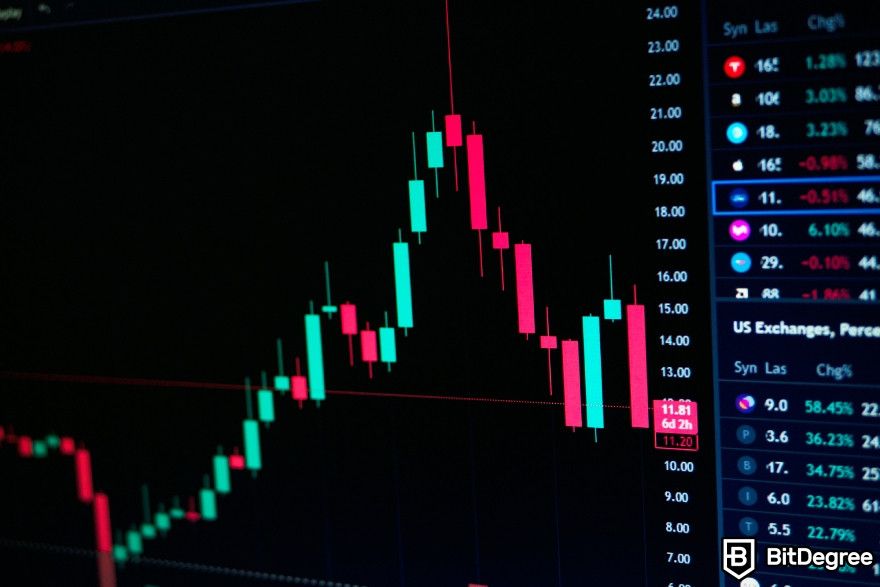
- Divergence in global economic performance. The Dollar Milkshake Theory suggests that the US economy may outperform other economies due to its stability and attractive investment opportunities. This can result in varying degrees of economic growth among countries, leading to big inequality rates.
- Impact on commodity prices. A stronger US dollar puts downward pressure on commodity prices. It makes commodities cheaper for countries with weaker currencies but can impact resource-rich nations heavily reliant on commodity exports.
- Shifting investment strategies. Investors may need to adjust their strategies to account for a stronger US dollar. This involves diversifying portfolios and mitigating risks associated with currency fluctuations and market volatility. Additionally, investors may seek sectors or assets that can benefit from diverging economic performances.
- Opportunities for US assets. The Dollar Milkshake Theory proposes increased demand for US assets such as stocks, bonds, and real estate. This can drive up prices and generate positive returns for investors holding US-denominated assets.
However, the theory is only a perspective put forth by some market observers, and real-life market outcomes can be influenced by many different and opposing forces. The rise of cryptocurrencies, for example, poses a big push against it.
The Impact of the Dollar Milkshake Theory on Cryptocurrencies
While the Dollar Milkshake Theory primarily focuses on the US dollar's strength relative to other fiat currencies, it can indirectly impact cryptocurrencies as well.
According to what is the Dollar Milkshake Theory, the US Federal Reserve's monetary policy and the relative strength of the USD create this milkshake-like vortex pull. That means it fosters a situation where the US dollar becomes the preferred currency for global investors.
This preference can be compared, again, to a milkshake, with investors wanting to drink from the US dollar "shake" due to its higher yield and stability.
The theory suggests that, as global investors seek out higher yields and safety in the US dollar, it leads to a surge in demand for US assets. This increased demand then causes the dollar to strengthen against other currencies.
Now, how strong is this USD pull when dealing with cryptocurrencies? How do they relate overall? If we consider the theory applies to crypto, there is a big potential implication – a dominant USD could limit the appeal of crypto as an alternative store of value.
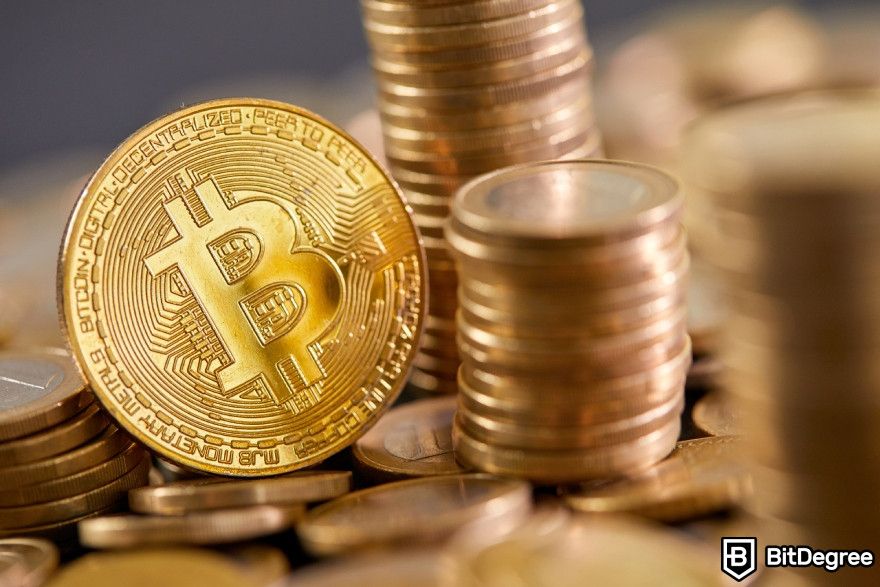
If the Dollar Milkshake Theory holds true, and the US dollar remains strong, it may impact cryptocurrencies' status as assets regarding strong safety and decentralism. The theory proposes that the US dollar's strength could lead to a stronger dollar-denominated economy.
In this scenario, cryptocurrencies, which operate outside traditional financial systems, may face challenges in gaining widespread adoption.
The full impact on cryptocurrencies depends on how the theory plays out in practice and how other economic factors and market dynamics evolve over time. In such situations, individuals in countries with struggling economies may turn to cryptocurrencies as an alternative to preserve their wealth.
This increased demand for cryptocurrencies might even counterbalance any negative impact on their adoption caused by the US dollar's strength. While the Dollar Milkshake Theory's impact on cryptocurrencies is indirect, it suggests potential challenges to their safe-haven status and widespread adoption.
However, the US dollar's dominance over other currencies isn’t recent. Let’s look back historically to understand the growth of its influence, starting with various historical events that gave birth to long-lasting factors.
Crypto: Another Milkshake?
Cryptocurrencies can potentially minimize the effects of the USD pull, as pictured in the Dollar Milkshake Theory summary. Online assets and cryptocurrencies can even become a pull as strong as the USD’s milkshake. This is because crypto brings forth new ways to maximize an investor's chance of profit by offering unseen benefits:
- Diversification. By investing in cryptocurrencies, one can diversify their portfolio beyond traditional fiat currencies, mitigating bonds to a single currency and risks related to them.
- Hedge against inflation. Cryptocurrencies like Bitcoin are considered a hedge against inflation due to their limited supply and decentralized nature. This could possibly help traders preserve purchasing power, in case USD loses value.
- Accessibility and decentralization. Cryptocurrencies operate on decentralized networks, providing global accessibility and reducing reliance on any specific country's monetary policies.
- Borderless transactions. Cryptocurrencies enable borderless transactions. This effectively reduces the impact of exchange rate fluctuations. Many observers and theorists argue that it can potentially reduce the collateral damage caused by USD dominance.
- Innovation and technological advancement. The underlying blockchain technology behind cryptocurrencies fosters innovation, potentially leading to the development of alternative financial tools and systems that can provide protection against the risks associated with the theory.
Now, it's not the Dollar Milkshake Theory summary yet, let's delve deeper into it.
Understanding USD’s Dominance
As you already know, according to the Dollar Milkshake Theory meaning, the US dollar holds a unique position as the global reserve currency. Therefore it is widely accepted and used for international trade and financial transactions. The concept itself yields a significant advantage since it contributes to a kind of “feedback” of its dominance.
To grasp the reasons behind the dollar's supremacy, let’s first consider historical factors that shaped its position. These factors can be traced back to World War II and the subsequent Bretton Woods agreement.
This agreement shaped an international monetary system established in 1944 as it aimed to promote global economic stability after the war[2]. To achieve it, two key institutions were created: the International Monetary Fund (IMF) and the World Bank, which were tasked with fostering economic cooperation and development.
Under the Bretton Woods system, participating countries agreed to peg their currencies to the US dollar, which was tied to gold.
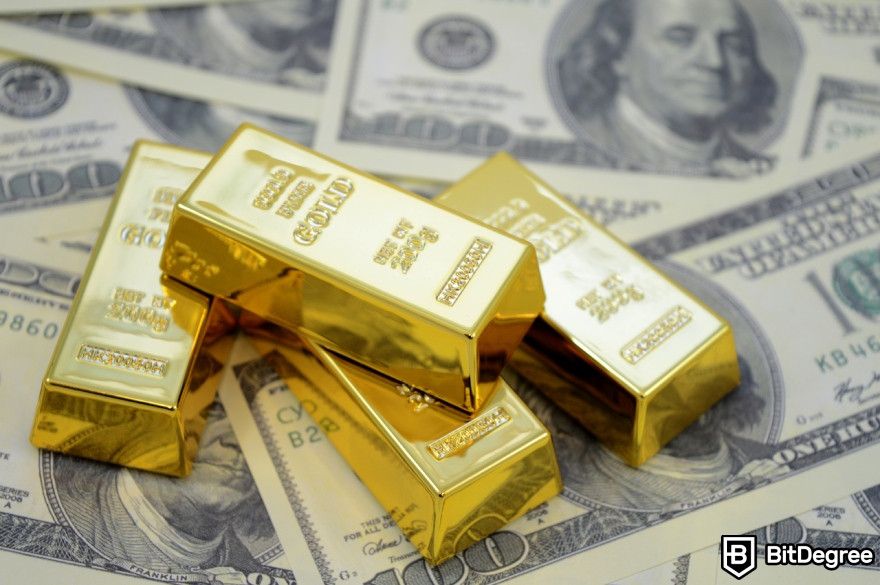
The US dollar became the global reserve currency, and other countries maintained fixed exchange rates relative to the dollar. This system provided stability and facilitated international trade and investments made in USD.
However, the Bretton Woods system faced challenges in the 1960s due to increasing US trade deficits and mounting pressures on the gold standard. In 1971, the United States suspended the dollar's convertibility into gold, effectively ending the fixed exchange rate system.
Despite its eventual demise, the Bretton Woods Agreement built the foundation for the modern international monetary system, laying out the US dollar as a dominant currency. Soon, following the war, the United States emerged as the world's largest economy and a key player in global affairs.
The US dollar was pegged to gold, while other currencies were pegged to the dollar. This arrangement effectively established the dollar as the anchor currency, reinforcing its prominence even more.
The expansion of international trade, in which the US played a pivotal role as a leading exporter and importer of goods and services, further bolstered the dollar's influence. Its wide acceptance as a medium of exchange in global transactions solidified its position as the go-to currency.

On top of that, the economic and geopolitical influence of the United States played (and still plays) a crucial role in USD's dominance. Central banks and institutions worldwide hold the dollar as a reserve asset, providing the country with tremendous control over global financial markets.
As a result, global investors seeking stability and security pour their capital into the US, creating the "milkshake" effect, in which the US absorbs liquidity from other countries.
An influx of liquidity like this further reinforces the dollar's strength and dominance. This is why the effect advocated by the dollar milkshake theorists is so strong. It’s retroactive and boosts its own causes and effects.
With the Dollar Milkshake Theory explained, it presents an additional perspective, suggesting that current economic conditions fortify the dollar's dominance. Still, many decisions are actively being made, by corporations and institutions, in order to keep things beneficial for the USD scenario.
The Role of Central Banks
As the Dollar Milkshake Theory explained, central banks (such as the Federal Reserve in the United States) play a crucial role in the economy and financial markets.
When global economies face challenges and uncertainties, investors seek a safe haven for their investments. As you already know, historically, the US dollar has been considered a relatively stable and secure currency. Therefore, when global conditions become uncertain, investors tend to flock to the US dollar as a safe asset.
This increased demand for the US dollar leads to a stronger value of the currency.
In this scenario, central banks can exert influence by implementing monetary policy measures that impact the supply of money and interest rates.
For example, if the Federal Reserve tightens its monetary policy by raising interest rates or reducing the supply of money, it can potentially strengthen the US dollar further. Consequently, it can make other currencies relatively weaker in comparison.

Naturally, if a country's currency weakens against the US dollar, its exports may become more competitive, but its imports may become more expensive.
In other words, central banks have control over decisions that heavily affect money supply and interest rates.
To sum up, the Dollar Milkshake Theory suggests that the actions of the Federal Reserve are tied to the value of the US dollar. As a result, a stronger USD can have significant implications for the global economy, affecting trade, investments, and debt.
Nevertheless, the US currency is not sealed away in a vacuum. Apart from crypto, even other fiat currencies may have different interests. Competitiveness can lead to healthy clashes, leading to some interesting dynamics.
Currency Wars and Trade Dynamics
The following ideas play a crucial role in understanding another aspect of the Dollar Milkshake Theory meaning and its implications on international trade. I’m talking about the fascinating concepts of competitive devaluations, currency wars, and trade imbalances.
To understand why they’re meaningful, let’s imagine some scenarios.
Say a specific country is facing economic challenges. One strategy that can be employed is called competitive devaluation. This is just a fancy name that refers to a deliberate reduction in the relative value of a country's currency.
The intention behind this is to make their own goods and services more affordable and attractive to foreign buyers. Countries may aim to have a weak currency on purpose, to boost their export competitiveness.
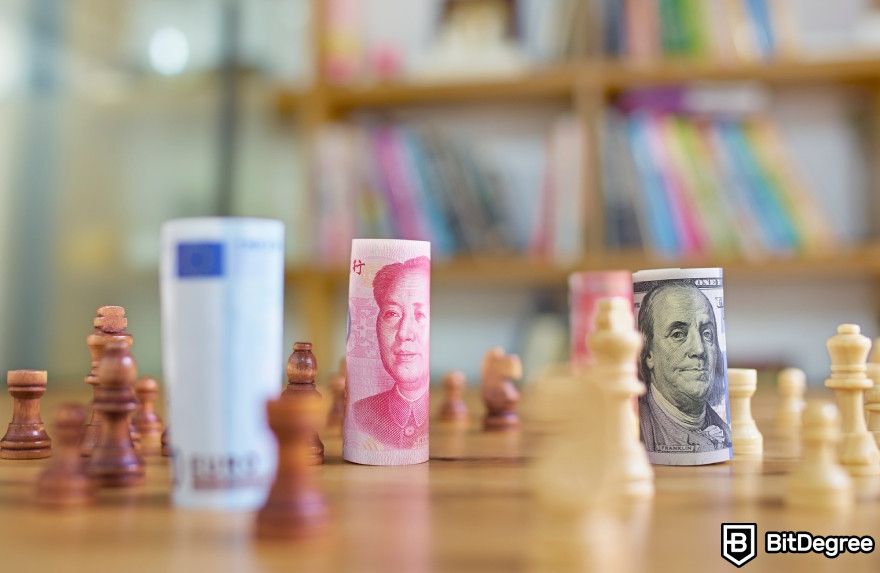
While this tactic may initially benefit individual nations, it can disrupt global trade dynamics. When multiple countries engage in this practice simultaneously, it can lead to what is called a currency war[3].
These wars occur when different nations competitively devalue their currencies to try and gain an advantage in international trade. That causes some artificiality when comparing multiple currencies, and it is hard to grasp how a specific import price relates to the global financial market as a whole.
But even local trading imbalances can affect the great scheme of things. Trade Imbalances may occur when the value of a country's imports exceeds the value of its exports, for example, resulting in a trade deficit.
To address this, countries artificially manipulate exchange rates, intervening in currency markets by adjusting things like interest rates.

Competitive devaluations and currency wars may intensify as countries attempt to weaken their currencies to counteract the strength of the US dollar. This could lead to heightened trade imbalances and a more complex exchange rate environment.
How those concepts can be significant in the context of the Dollar Milkshake Theory meaning? They are direct implications on how countries navigate the challenges posed by the strong US dollar and its pulls on global trade. More precisely, they’re just examples of many implications.
However, skeptics argue that the Dollar Milkshake Theory oversimplifies complex global economic dynamics. They also argue that it is misleading to ignore other factors that influence currency values.
Criticisms of the Dollar Milkshake Theory Explained
One of the main criticisms of the Dollar Milkshake Theory meaning revolves around the assumption that a global liquidity crisis will inevitably result in a surge in dollar demand. The international financial system is more complex and interconnected than one might assume.
For example, in the face of a crisis, other major currencies like the euro or the yen could also experience increased demand. If investors are in search of safe-haven assets, diversification can bring even more safety.
Additionally, the theory overlooks the potential for central banks to take coordinated action to mitigate a liquidity crisis, which could reduce the impact on the dollar.
While the Dollar Milkshake Theory summary focuses on the potential strength of the US dollar, alternative theories and perspectives offer other interpretations of the global financial landscape.
One such alternative view is the theory of currency multipolarity.
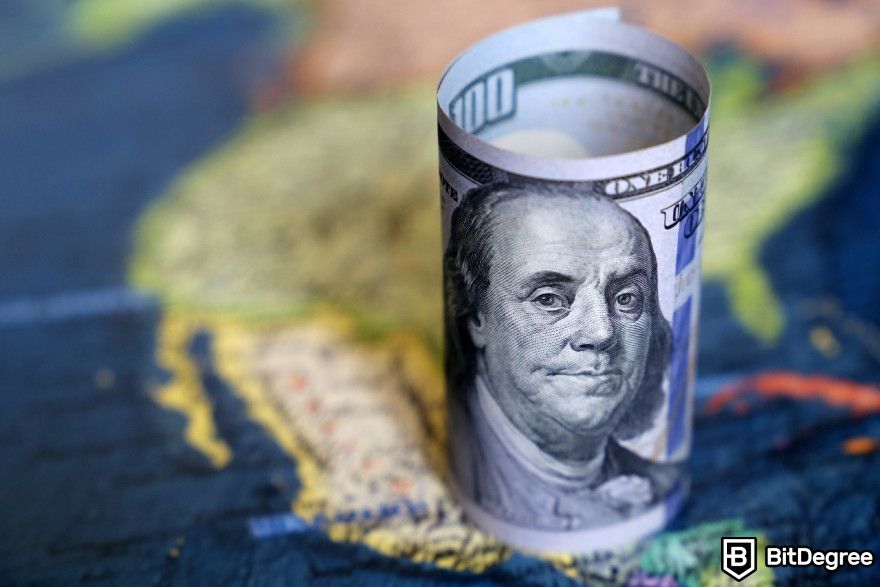
This perspective suggests that, as economic power shifts and emerging markets gain prominence, the world could witness a diversification away from the dollar-dominated system[4].
Proponents of this view argue that regional currency arrangements and other settlement mechanisms can frustrate milkshake-based forecasts. Digital currencies or barter agreements could erode the USD's dominance over time.
Another alternative perspective emphasizes the role of structural factors in shaping currency dynamics.
According to this structuralist view, the dollar's strength or weakness is influenced by untameable factors, including trade imbalances, interest rate differentials, and fiscal policies.
Structuralists suggest that short-term liquidity crises may have a limited impact on the dollar's long-term trajectory, as fundamental economic factors ultimately drive currency valuations.
In either case, it is crucial to assess both the validity and limitations of the theory. While it presents a plausible scenario under certain conditions, its predictions may rely on a simplified view of the global financial system.

If we assume a one-sided flight to the US dollar during a crisis, we can end up overlooking the potential for other currencies to also attract demand. Moreover, the theory does not account for the role of other central banks and their ability to respond to crises through monetary policy measures or international cooperation.
Additionally, the Dollar Milkshake Theory tends to focus primarily on the short-term impact of liquidity crises on the dollar's value. However, currency dynamics are influenced by a multitude of factors, including long-term economic trends, geopolitical developments, and technologies like crypto.
Therefore, many people find it essential to consider the broader context and not solely rely on a single theory to forecast currency movements accurately.
By examining and considering alternative perspectives, one can achieve a more comprehensive understanding of the uncertainties surrounding global currency dynamics. That can be especially invaluable when evaluating what can be done in the future.
Future Implications of the Dollar Milkshake Theory
The potential long-term effects of the Dollar Milkshake Theory can be considered from a few different perspectives:
USD Strength
If the theory holds true and the US dollar does indeed strengthen as a result of increased capital inflows, make imports cheaper for US consumers. Lower inflation and increased purchasing power also come with a flip side, where it could also make the US exports relatively more expensive.
Global Economic Dynamics
The theory suggests that the United States will attract capital from around the world. This, in turn, could have implications for other currencies and economies.
As capital flows into the US, it may lead to a relative weakening of other currencies and potentially put pressure on emerging markets. Consequently, this could create challenges for countries with high levels of debt denominated in foreign currencies, as their debt burdens may increase.
Financial Markets
If it plays out, this phenomenon may impact financial markets in various ways. For instance, investors may allocate more capital to US assets, which could potentially lead to higher stock prices and lower bond yields in the United States.

Conversely, other markets may experience outflows as investors seek higher returns in the US As a result, this could contribute to increased volatility and divergent performance across different regions and asset classes.
Geopolitical Considerations
A stronger US dollar can also have geopolitical implications. For one, it may enhance the United States' position as a global economic power and potentially strengthen its influence in international affairs, even outside of the economic spectrum.
Additionally, it could also affect international trade dynamics, as countries with weaker currencies may face challenges in exporting to the US, causing an even more unbalanced economic strength, in regards to the dollar.
Whether impending or impossible, analyzing theories like the Dollar Milkshake Theory summarily helps understand the big economical picture. That can work in your favor whenever dealing with trading, either fiat or crypto.
Conclusions
So, that's pretty much it when it comes to the Dollar Milkshake Theory. We've delved into the fascinating world of global finance and examined the notion that the strength of the USD can be compared to a lip-smacking milkshake, attracting investors from all corners of the world.
While the theory certainly stirs up a lot of debate, one thing is clear: the rise of cryptocurrency exchanges has added a new flavor to the mix. With their decentralized nature and the promise of financial freedom, they're like a sweet and creamy topping on our dollar milkshake.
Crypto exchanges like Binance, Bybit, and Kraken act as a blender, whipping up a frothy concoction of traditional and digital currencies, allowing investors to savor the best of both worlds. Just remember, even after having the Dollar Milkshake Theory explained, it's essential to approach these financial delicacies with an open mind and a dash of skepticism.
The content published on this website is not aimed to give any kind of financial, investment, trading, or any other form of advice. BitDegree.org does not endorse or suggest you to buy, sell or hold any kind of cryptocurrency. Before making financial investment decisions, do consult your financial advisor.
Scientific References
1. P. O. Gourinchas: 'Chapter 7: The Dollar Hegemon? Evidence and Implications for Policymakers';
2. S. Kilsztajn: 'The Bretton Woods Agreement and Historical Evidence. The Post-War International Financial System';
3. O. Jeanne: 'Currency Wars, Trade Wars, and Global Demand';
4. V. Sadil, J. Sipko: 'The International Monetary System: New Evidence Concerning a Transition to Multipolarity'.



